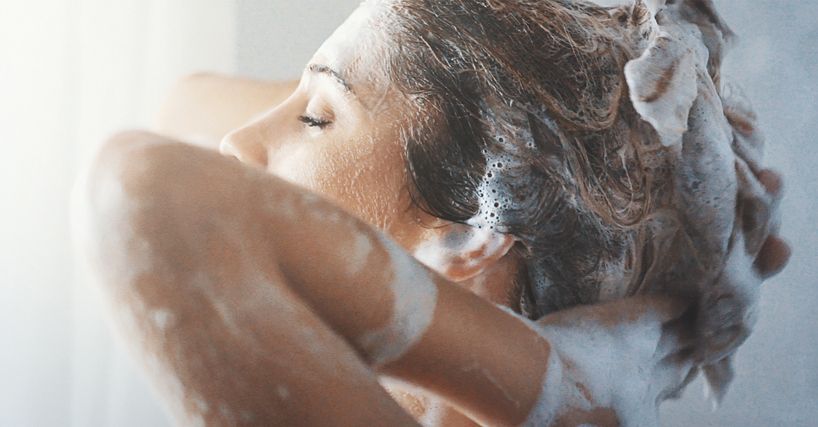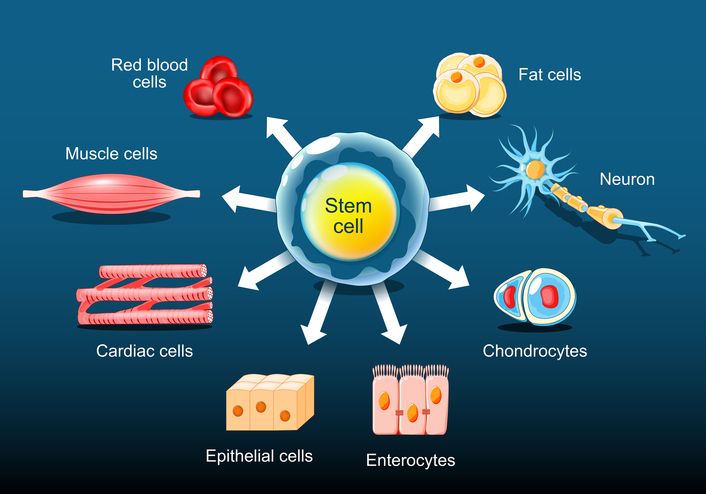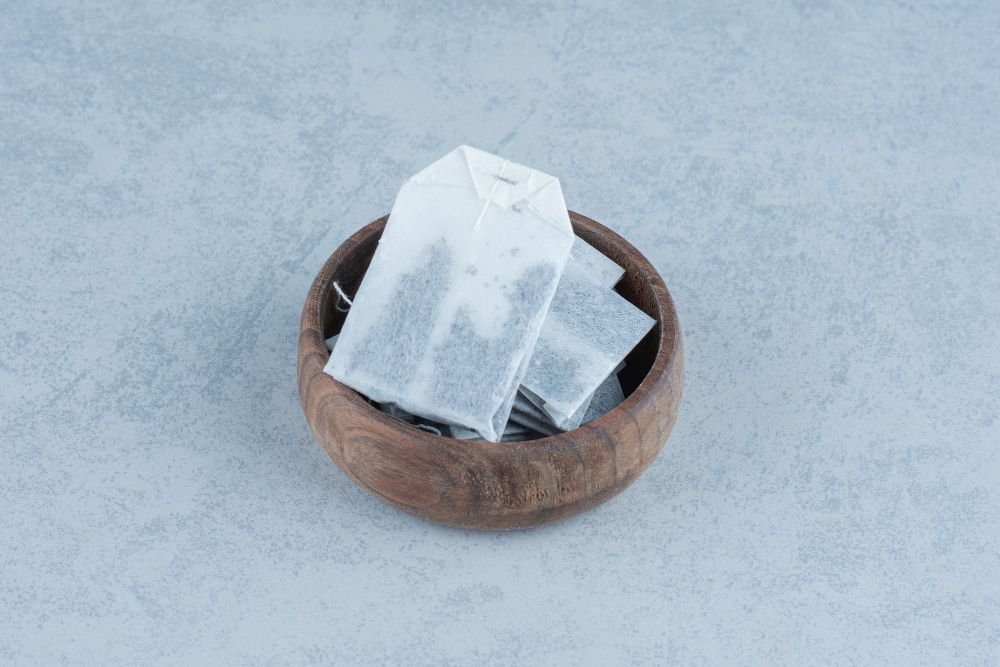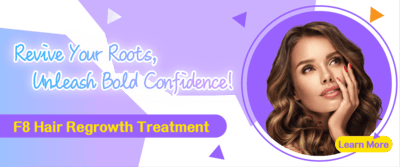

Book Now to Experience
F8 Hair Regrowth Treatment
1 Minute Self-Registration
Date should not be before minimal date
Author: Leila Tan|Updated: 23 July 2024
Have you ever wished you had long, thick hair that grew quickly? Even though hair growth is a natural process that is different for each person, there are tools and tricks you can use to make your hair grow faster. In this piece, we'll talk about some traditional and new tools that can help you grow your hair faster and feel better about yourself. Leave your hair problems behind and say hello to a lush mane! People often think that people with beautiful, healthy hair are attractive and full of life. But things like genetics, age, and how you live your life can affect hair growth and make it slow or stop. You can speed up hair growth and get the length you want thanks to improvements in hair care technology and the use of natural treatments.
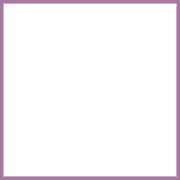
1
Understanding Hair Growth
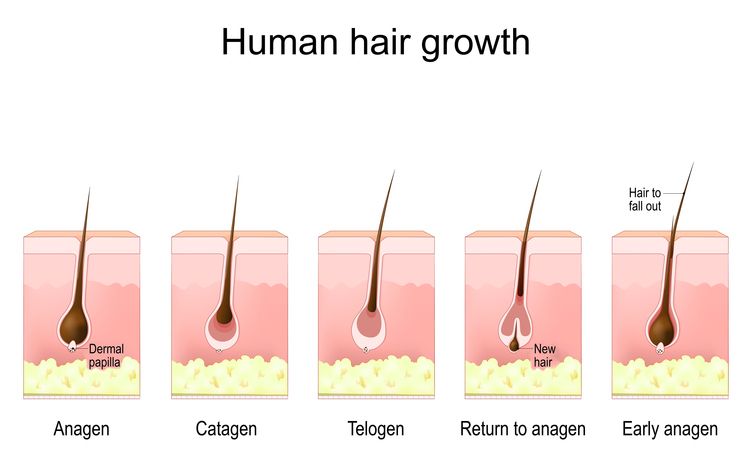
Before we get into the tools and methods that help hair grow, let's look at how hair grows in general. Each hair goes through a cycle that includes a phase of growth (called anagen), a phase of rest (called telogen), and a phase of loss (called catagen). On average, hair grows about half an inch per month, but this rate can change from person to person based on different things.
Anagen phase (growth phase)
This is the time when hair grows the most. During this phase, hair cells in the root divide quickly, and the hair strand comes out of the follicle. How long hair can grow depends on how long the anagen phase lasts, which is different for each person. This time lasts between 2 and 7 years on average.
Catagen phase (transitional phase)
During this time, the hair follicle gets smaller, and hair stops growing. It is a short time of change that lasts about two to three weeks. During this time, the hair separates from the blood supply and gets ready for the next step.
Telogen phase (resting phase)
This is the part of the hair growth cycle when the hair is at rest. The hair shaft rests for about two to three months while new hair grows underneath it. At any given time, about 10–15% of our hair is in this phase. The old hair falls out after the telogen phase, and the cycle begins again with the anagen phase.
It's important to remember that not all hair cells are in the same phase at the same time. Each hair follicle operates independently, which is why we don't shed all our hair at once. The cycle of hair growth means that hair strands are always being replaced and made new.
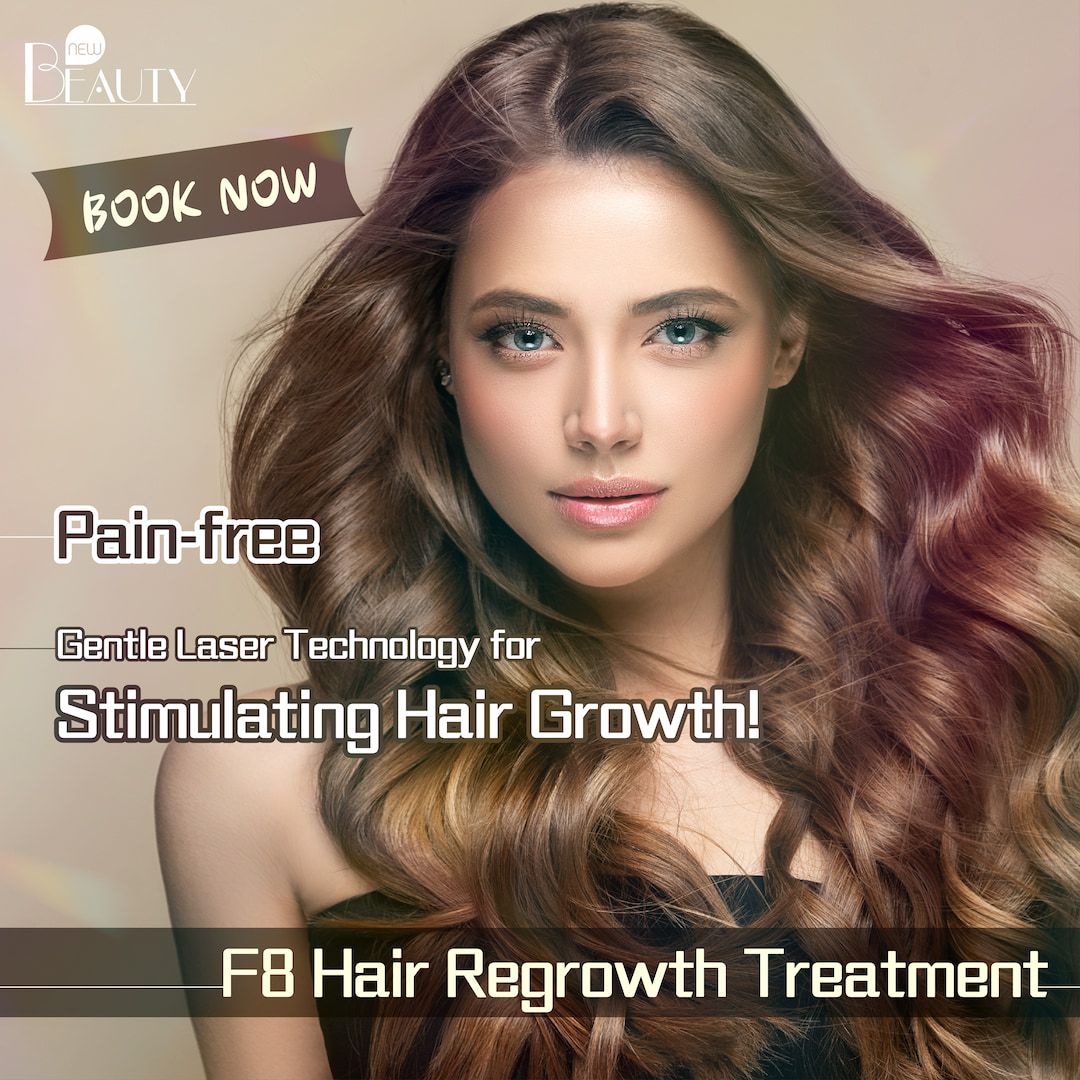

2
Nourishing Your Hair from Within
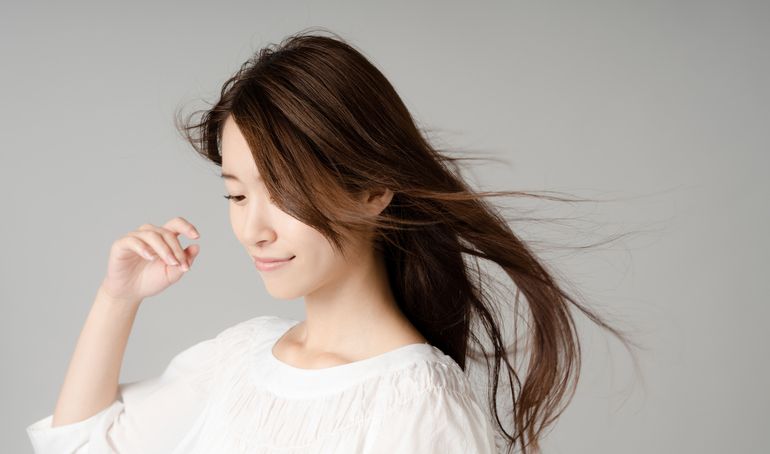
Healthy food and proper nutrition are very important for keeping hair healthy. By eating a wide range of nutrient-rich foods, you can get the vitamins and minerals your hair needs to grow. Biotin, vitamin D, and omega-3 fatty acids are all products that can help keep your hair healthy. Water is also important because it keeps your skin and hair from drying out.
In addition to internal nourishment, a proper hair care regimen is essential for promoting hair growth. You can improve the health and growth of your hair by employing a few simple practices:
Maintain a balanced diet
Get plenty of healthy nutrients from the foods you eat. Fruits, veggies, whole grains, lean meats, fish, nuts, and seeds all contain vital nutrients that contribute to healthy hair, so make sure you eat plenty of them.
Hydrate properly
Hydrate your body and hair by drinking a lot of water every day. Hair can't be kept in good condition without enough water.
Regularly wash your hair
Regularly washing your hair with a mild shampoo is the best way to prevent buildup of grime, oil, and styling products. Pick a shampoo that works with your hair's unique texture to keep it from being stripped of its natural oils.
Condition your hair
After you wash your hair with shampoo, apply conditioner to help restore moisture and nourish dry, damaged hair. The tips of your hair are the most fragile and dry part of your entire head.
Protect from heat and styling damage
Too much heat from tools like straighteners and curling irons can damage your hair. Use these tools rarely or use heat protectant sprays when you need to. Also, don't use chemicals like perms, relaxers, or colouring too often, because they can weaken and hurt the hair shaft.
Use a wide-toothed comb or a brush with soft bristles
Don't use brushes or combs that are too rough because they can damage or break your hair. Choose combs or brushes with soft bristles and wide teeth to gently untangle your hair.
Trim regularly
By getting your hair cut regularly, you can get rid of split ends and stop further damage. Try to get a haircut every 6 to 8 weeks to keep your hair healthy and help it grow.
Avoid excessive heat and chemical treatments
Chemical hair products, relaxers, and other treatments can damage your hair, so use them as little as possible. Also, try to use hot shaping tools less and style your hair without heat as much as possible.
Protect your hair from the sun
The sun's UV rays can make your hair dry and weaken it. Wear a hat or use hair products that protect against UV rays to keep the sun from hurting your hair.
Deep condition regularly
Deep cleaning treatments can be done once a week or as needed. Deep conditioning helps your hair get back its wetness, fix any damage, and look and feel better overall.
Massage your scalp
Regular head massages get the blood moving, which helps hair grow and stay healthy. Every day, gently massage your hair in circles with your fingertips for a few minutes.
Avoid tight hairstyles
Hairstyles that pull and tug on your hair, like ponytails, knots, and buns, can cause it to break. Choose hairstyles that are less tight or switch between styles to reduce the stress on your hair.
Get enough sleep and manage stress
A good night's sleep and figuring out how to deal with worry is important for health in general, including hair health. Aim for 7-8 hours of good sleep every night and find healthy ways to deal with stress, like working out, meditating, or doing something you enjoy.
Keep in mind that everyone's hair is different, so you need to find a schedule and products that work well for you. Listen to what your hair wants, take care of it the same way every time, and be patient, because nourishing hair takes time.
Read More

3
Promoting Hair Growth with Tools and Techniques
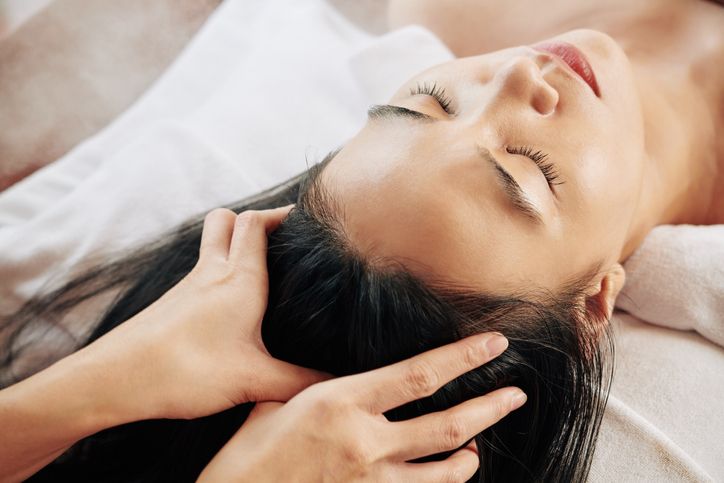
In addition to a proper hair care routine, there are several tools and techniques available that can help boost hair growth and accelerate the process:
Laser combs and helmets
1. Laser combs are handheld gadgets that look like combs and have low-level laser diodes built in. When the hair is brushed through the comb, the low-level laser light from the diodes shines on the head. The goal is to make the hair cells work harder, boost blood flow, and make hair grow faster. Most people use laser combs for a few minutes a few times a week.
2. Laser helmets, which are also called laser caps or laser therapy caps, are devices that look like headgear and have several low-level laser lights. They are made to be worn right on the head and cover the whole neck. The lasers in the helmet give off low-level laser light, like laser combs, but the helmet makes it easier and more handy to use because you don't have to use your hands.
Microneedling devices
Microneedling devices, which are also called derma rollers or dermarollers, are used to do microneedling therapy on the face. Microneedling is a cosmetic treatment that uses tiny needles to make tiny holes in the skin in a controlled way. These tools are held in one hand and look like a roller or stamp with several fine needles connected to it.
When the device for microneedling is rolled or stamped over the skin, the needles make small holes or channels in the top layers of the skin. These small injuries cause the body's natural way of healing, which leads to collagen production and new skin growth. The benefits of microneedling include:
1. Collagen production Microneedling encourages the skin to make collagen, a protein that makes the skin more flexible and strong.
2. Skin rejuvenation Microneedling can help lessen the look of fine lines, wrinkles, and scars by making the body make more collagen. It also makes the face smoother and more even-toned.
3. Enhanced product absorption Microneedling makes tiny channels in the skin that help skincare products to get deeper into the skin and work better.
Microneedling tools have needles that range in length from 0.2 millimetres to 2.5 millimetres. The length of the needle used depends on the skin problem and where on the body it is being used. Most of the time, professionals in clinical situations use needles with longer, deeper lengths.
Scalp massagers
There are different ways to massage the head that can help you relax, improve blood flow, and make your hair healthier. Here are a couple of examples:
1. Circular massage Massage your scalp gently in small circles with your hands. Start at the front of your head and move backwards. This method helps get blood to the hair roots and makes you feel more relaxed.
2. Kneading massage Use your hands to knead and lift small areas of your scalp. Apply a little pressure and then let go. Do this over your whole head. This method helps to relieve stress and increase blood flow.
3. Tapping or pitter-patter massage Tap or lightly drum on your scalp with your fingers. Start at the front of your head and work your way backwards. This method helps get the blood flowing and wakes up the head.
4. Acupressure Massage Use your fingers to gently press on certain points on your scalp. You can put pressure on acupressure points like the temples, the base of the skull, or behind the ears to help reduce stress and make you feel more relaxed.
5. Scalp Brush Massage Use a soft-bristled brush or a scalp massager to gently brush or massage your scalp. Start at the hairline and work your way back in circular or linear motions. This technique can help exfoliate the scalp, improve blood circulation, and distribute natural oils.
6. Oil Massage Put a small amount of warm oil on your skin. You can use coconut oil, olive oil, or jojoba oil. Massage the oil into your scalp in a circular motion with your fingers. This method helps to keep the scalp moist, feed the hair follicles, and help you rest.
Remember to be gentle when massaging your head so you don't cause any pain or irritation. Change the pressure to a level that feels good to you, and try out different methods to find what works best for you.
Essential oil treatments
Essential oils can be used as a natural way to help your hair grow, keep your scalp healthy, and improve its general condition. Here are some popular essential oils and what they can do for you:
1. Lavender Oil Lavender oil has qualities that calm and soothe. It can help reduce inflammation on the scalp, make hair grow faster, and make the hair and scalp healthier generally.
2. Peppermint Oil Peppermint oil makes you feel cool and can help get blood flowing to your head. It might help your hair grow and feel good on your scalp.
3. Rosemary Oil Rosemary oil is known to increase blood flow and wake up hair cells, which helps hair grow. It can also help get rid of dandruff and make hair stronger.
4. Tea Tree Oil Tea tree oil helps get rid of dandruff and scalp problems because it kills bacteria. It can also help calm an itchy scalp and create a healthy environment for the head.
5. Cedarwood Oil Cedarwood oil's possible ability to stimulate hair follicles and hasten hair growth is intriguing. It may help maintain a healthy scalp by regulating oil production and soothing inflammation.
6. Ylang-Ylang Oil Ylang-ylang oil's ability to normalise sebum production is a boon for those with both dry and oily scalps. It also smells great.
Before putting essential oils on the skin or hair, you should mix them with carrier oil like coconut oil, almond oil, or jojoba oil to make them less strong. This keeps the skin from becoming sensitive or irritated. Mix a few drops of the chosen essential oil with a tablespoon of carrier oil and massage it gently into the head. Leave it on for a few hours or overnight before washing it off. Before using any essential oil, you should do a patch test to see if you have any allergies.
While natural remedies and tools can be effective for hair growth, there are treatments that are effective to address hair loss and stimulate hair growth. Introducing New Beauty's F8 Hair Regrowth Treatment.


4
Have The Hair of Your Dream with F8 Hair Regrowth Treatment
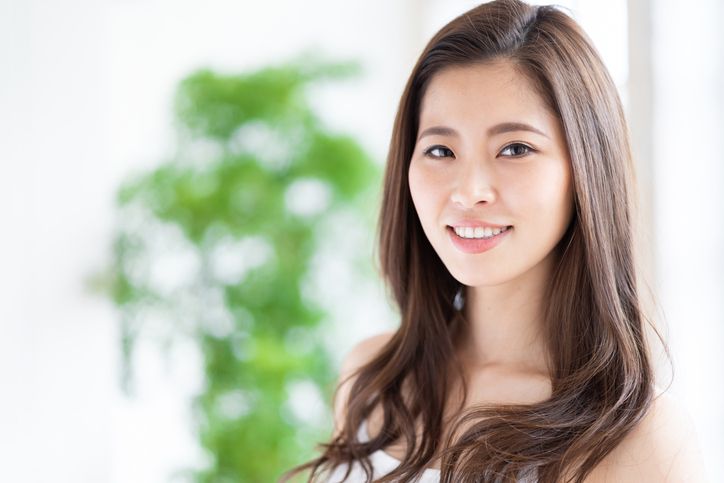
F8 Hair Regrowth Treatment is a safe, natural method for keeping your scalp and hair in good condition. Inactive hair follicles are stimulated, and their internal hair papilla is strengthened as low-level laser energy is swept across the scalp. The serum and revitalising nutrients also strengthen capillaries and improve microcirculation, both of which are important for reviving dormant hair follicles.
This procedure is non-invasive, which means there will be no wounds. The low-energy laser stimulates blood circulation while producing little skin harm. Following the procedure, hair growth serum will be applied on the scalp for hydration and sebum control. As a result, The scalp will feel revitalised and nourished, warding off future hair and scalp issues. With that, both the thickness and the quality of your hair will increase after treatment!

Book Now to Experience
F8 Hair Regrowth Treatment
1 Minute Self-Registration
Date should not be before minimal date

5
Conclusion

A combination of healthy habits, appropriate hair care, and the use of effective tools and techniques are required to achieve faster hair growth. By nourishing your hair internally, adopting a consistent hair care routine, investigating natural remedies, and treatments, you can promote hair growth and unlock its maximum potential.
Remember that everyone's journey to hair growth is different, and results may vary. Incorporating these tools and strategies into your routine requires patience and consistency. Embrace the process and revel in the transformation as you care for and cultivate your beautiful locks so get your treatment now with New Beauty's F8 Hair Regrowth Treatment!
FAQ
1. Can certain hairstyles promote hair growth?
Some hairstyles, like loose braids or soft updos, can help protect your hair and keep it from breaking, so it can grow in healthy. Don't wear your hair in tight styles that pull on it, as this can damage it over time.
2. Is hair growth affected by stress?
Yes, worry can mess up the hair growth cycle and cause more hair to fall out or hair to grow more slowly. Using relaxation methods, exercise, and self-care to deal with stress can help your hair grow better.
3. Are there any side effects of using hair growth tools?
Most hair growth tools have few side effects, but it's important to follow the guidelines and not use them too much. Some people may have irritated or sensitive scalps, so it's best to start with low strength or talk to an expert.
4. How long does it take to see results with these tools?
Hair grows slowly, and the effects can be different for each person. When you use hair growth tools and techniques regularly, it can take a few weeks to a few months before you can see your hair getting longer and thicker.
5. Can hair growth tools be used on all hair types?
Most tools for growing hair work for different kinds of hair, but it's important to think about your own needs and hair condition. Before adding these tools to your routine, you should talk to a professional if you have any worries or your hair is in a special way.

Book Now to Experience
F8 Hair Regrowth Treatment
1 Minute Self-Registration
Date should not be before minimal date
Recommended Articles
COPYRIGHT© NEW BEAUTY MANAGEMENT LIMITED 2025. ALL RIGHT RESERVED.

